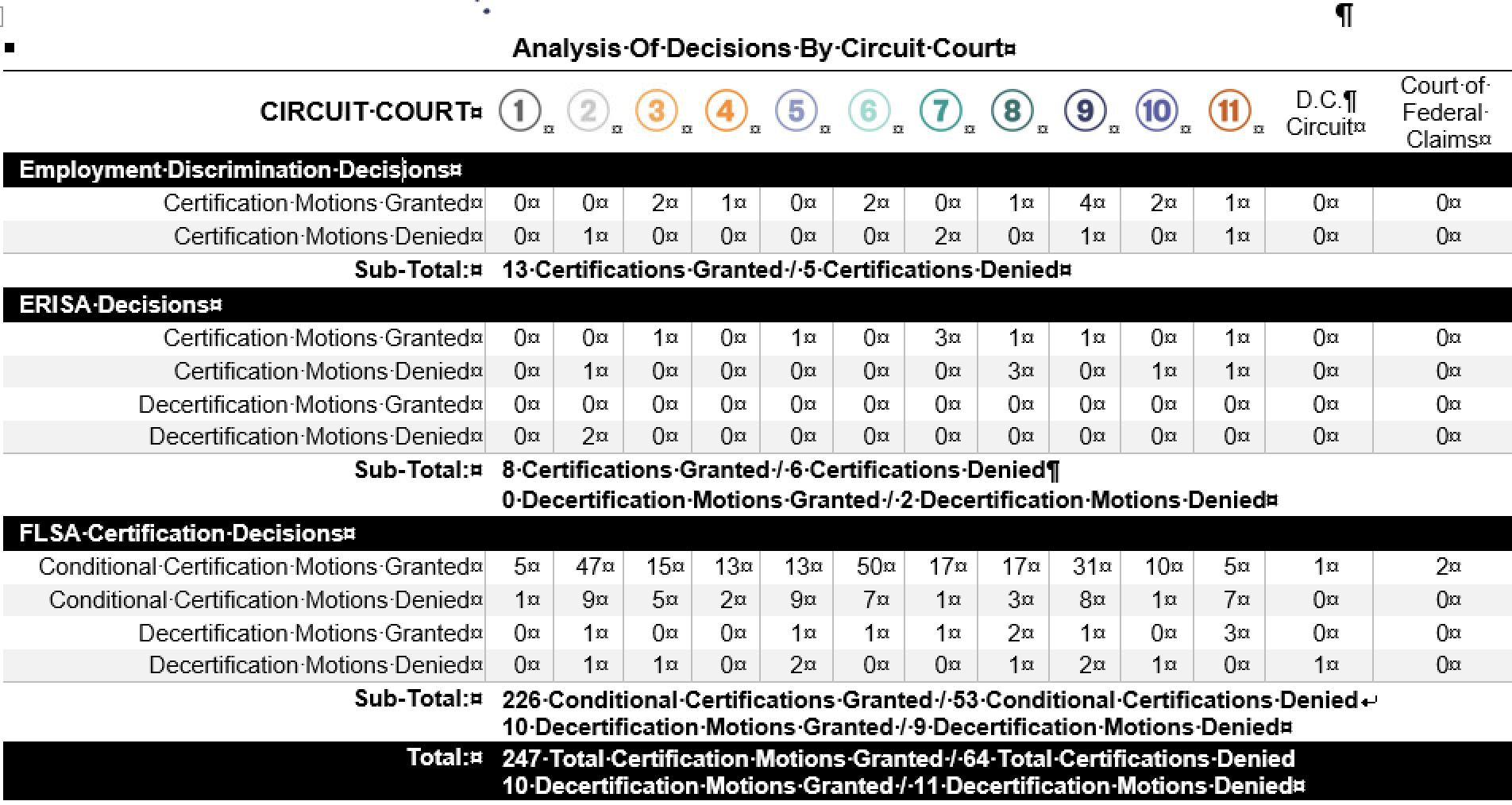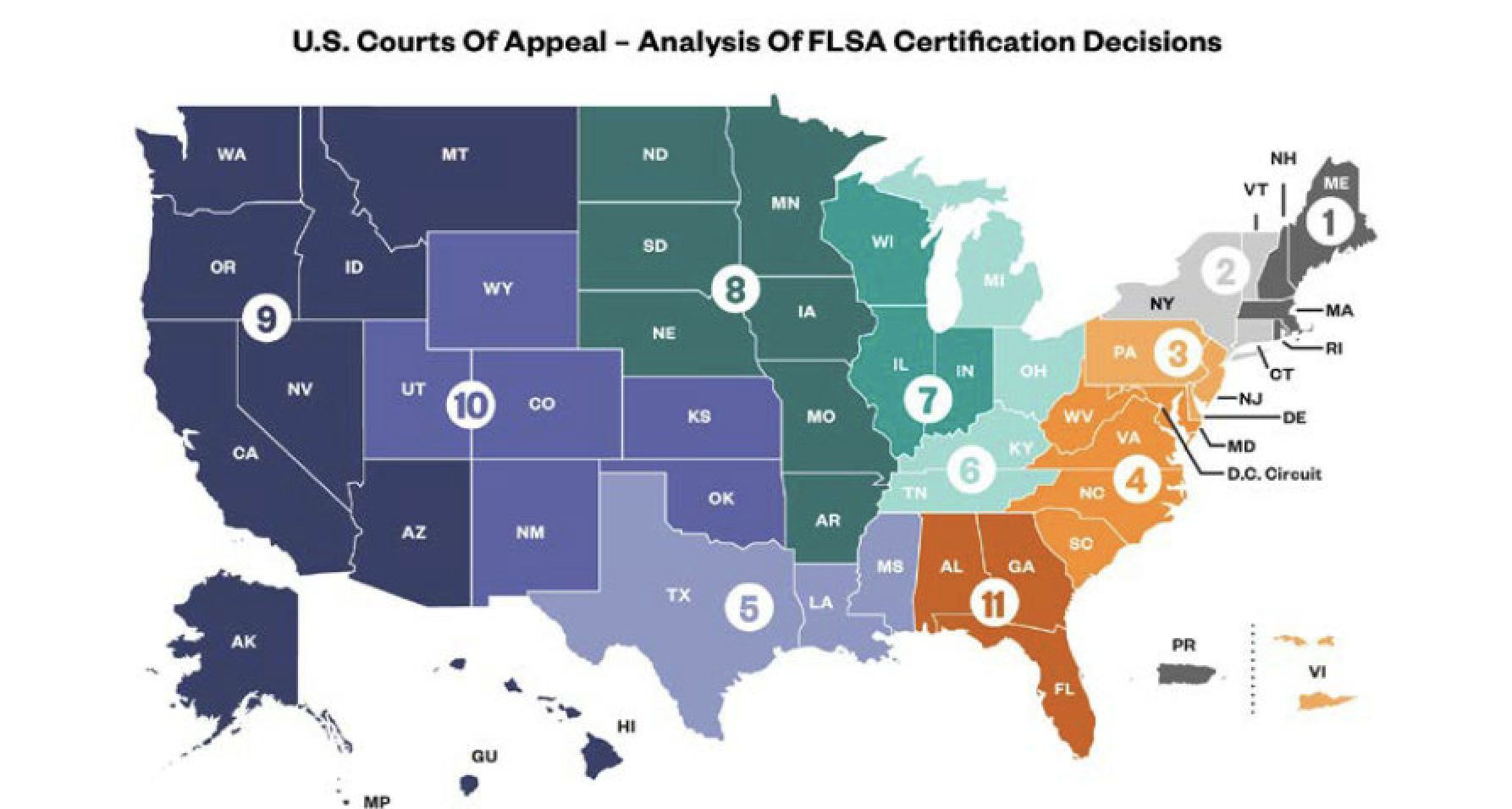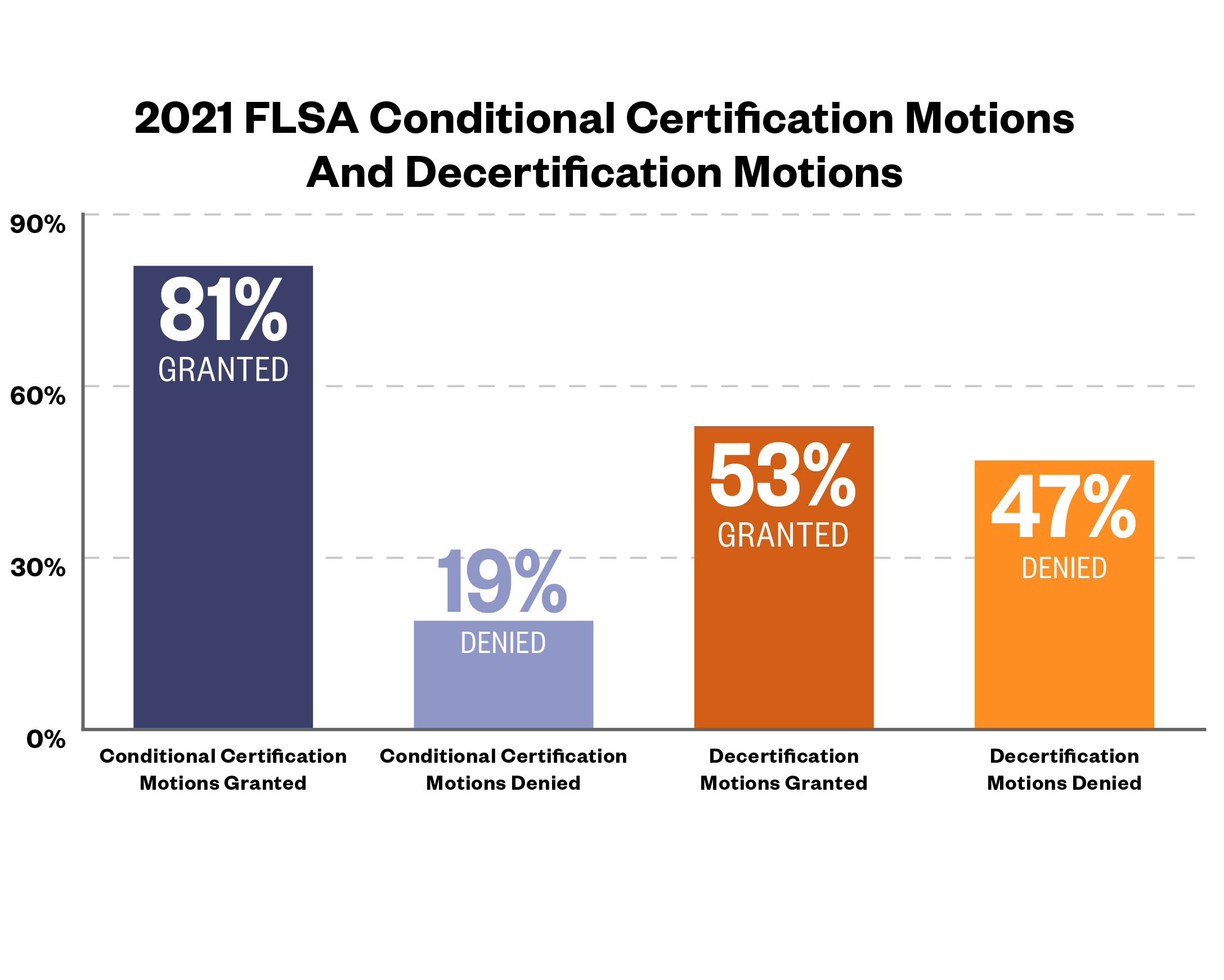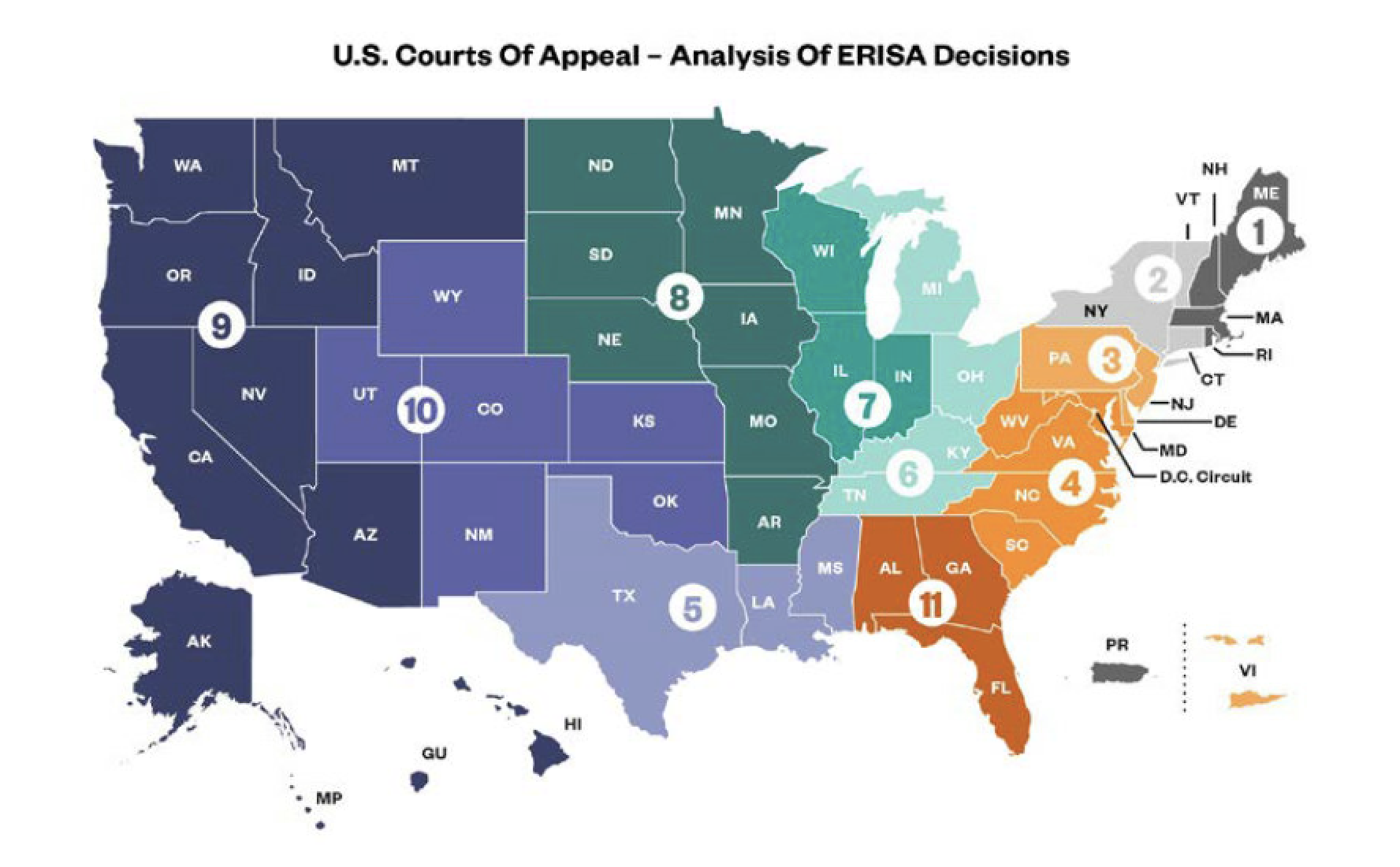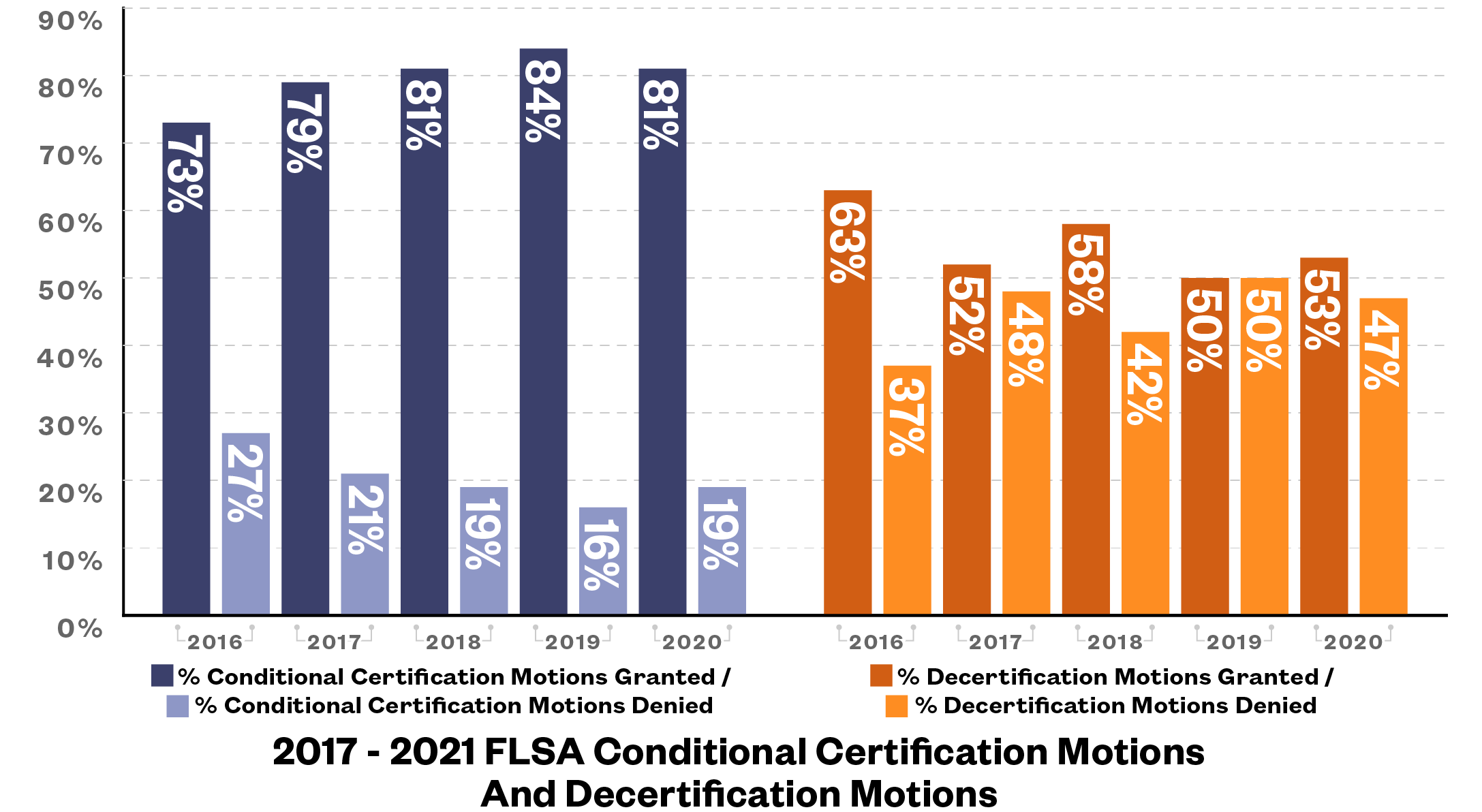 Seyfarth Synopsis: In our continuing coverage of the top trends found in Seyfarth’s 2022 Workplace Class Action Litigation Report, wage & hour litigation remained the sweet spot for the plaintiffs’ class action bar over the past year. Based on sheer volume and statistical numbers, workers certified more class and collective actions in the wage & hour space in 2021 as compared to any other area of workplace. Complex workplace litigation remains one of the chief exposures driving corporate legal budgetary expenditures. Class actions and multi-plaintiff lawsuits, in particular, continue to provide a source of concern for companies. A prime component in that array of risks indisputably continues to include complex wage & hour litigation.
Seyfarth Synopsis: In our continuing coverage of the top trends found in Seyfarth’s 2022 Workplace Class Action Litigation Report, wage & hour litigation remained the sweet spot for the plaintiffs’ class action bar over the past year. Based on sheer volume and statistical numbers, workers certified more class and collective actions in the wage & hour space in 2021 as compared to any other area of workplace. Complex workplace litigation remains one of the chief exposures driving corporate legal budgetary expenditures. Class actions and multi-plaintiff lawsuits, in particular, continue to provide a source of concern for companies. A prime component in that array of risks indisputably continues to include complex wage & hour litigation.
The following map sets forth a circuit-by-circuit analysis of this year’s 332 class certification decisions in all varieties of workplace class action litigation, including wage & hour, employment discrimination, and ERISA.
As the map reflects, in 2021, complex wage & hour litigation under the FLSA drove more certification briefings and a greater number of certification decisions than other areas combined.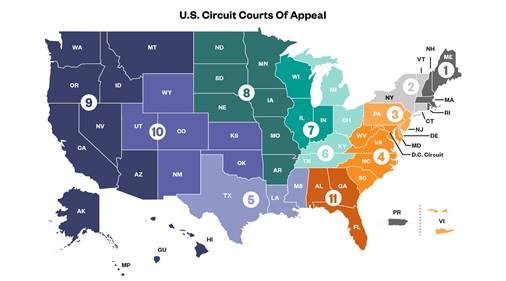
Wage & Hour Certification Trends
The ease with which plaintiffs have achieved first-stage certification in the FLSA wage & hour context surely has contributed to the number of filings in that area, and plaintiffs achieved a higher rate of success on initial certification motions in 2021 than in any other year of the past decade, indicating that wage & hour remains a sweet spot for the plaintiffs’ bar.
In 2021, wage & hour lawsuit filings in federal courts decreased for the sixth year in a row. That said, more FLSA lawsuits were filed during each of the preceding nine years – during 2012, 2013, 2014, 2015, 2016, 2017, 2018, 2019, and 2020 – than were filed in any year of the preceding several decades. Many of these cases remain in the pipeline within federal courts, and the result is a burgeoning case load of wage & hour issues.
To be sure, the significant volume of FLSA filings over the past several years has caused the issuance of more certification rulings in the FLSA area than in any other substantive area of complex employment litigation. Despite the pandemic’s continued impact on court operations and personnel, courts issued more rulings on wage & hour certification issues in 2021 than they issued in each of the past five years. In particular, federal courts issued 298 decisions on FLSA certification and decertification issues in 2021, an increase from the 286 certification rulings issued in 2020, the 267 certification rulings issued in 2019, the 273 certification rulings in 2018, and the 257 certification rulings in 2017.
Of these rulings, 279 addressed first-stage motions for conditional certification of wage & hour collective actions under 29 U.S.C. § 216(b), whereas 19 addressed second-stage motions for decertification. Plaintiffs historically have secured a higher rate of success on the former, while employers have secured a higher rate of success on the latter. In 2021, as noted above, plaintiffs achieved an exceptionally high rate of success on first stage conditional certification motions, equal to or higher than the rate they achieved in any year of the past decade aside from 2020. In 2021, Plaintiffs saw their rate of success at 81%, down slightly from their 2020 success rate of 84%, and the same as their 2019 success rate of 81%. Employers, on the other hand, saw their rate of success on decertification motions rise to 53% in 2021, up from 50% in 2020 and 58% in 2019.
The analysis of these rulings – discussed in Chapter V of this Report – shows that plaintiffs filed a high predominance of cases against employers in “plaintiff-friendly” jurisdictions such as the judicial districts within the Second and Ninth Circuits. For the second time in a decade, however, rulings were equally or more voluminous out of the Sixth Circuit, which also tended to favor workers over employers in conditional certification rulings.
The following map illustrates this trend:
The statistical underpinnings of this circuit-by-circuit analysis of FLSA certification rulings is telling in several respects.
First, it substantiates that the district courts within the Second, Sixth, and Ninth Circuits are the epi-centers of wage & hour class actions and collective actions. More cases were prosecuted and conditionally certified – 47 certification orders in the Second Circuit, 31 certification orders in the Ninth Circuit, and 50 certification orders in the Sixth Circuit – in the district courts in those circuits than in any other areas of the country. For the second time in two years, the Sixth Circuit – which encompass the states of Michigan, Ohio, Kentucky, and Tennessee – had more rulings and certifications than either the Second or Ninth Circuits.
Second, as the burdens of proof under 29 U.S.C. § 216(b) suggest, plaintiffs won the overwhelming majority of “first stage” conditional certification motions (226 of 279 rulings or approximately 81%) in 2021, which was similar to the 2020 numbers (231 of 274 rulings or approximately 84%), the 2019 numbers (198 of 243 or approximately 81%), and the 2018 numbers (196 of 248 rulings or approximately 79%), which were themselves the highest percentages of plaintiff-side wins recorded in the last decade. Further, in terms of “second stage” decertification motions, employers won 53% (10 of 19 rulings) in 2021, which represented a slight rise from the 2020 numbers (6 of 12 rulings or approximately 50%) and the 2019 numbers (14 of 24 rulings or approximately 58%).
Overall, these statistics show robust numbers for the plaintiffs’ bar, as plaintiffs prevailed on “first stage” conditional certification motions at a high rate in 2021 and lost “second stage” decertification motions at a lower rate. The “first stage” conditional certification statistics for plaintiffs at 81% were nearly as favorable as the rate of success that workers obtained in 2020 (84%), as favorable as the rate of success that workers obtained in 2019, when plaintiffs won 81% of “first stage” conditional certification motions, and more favorable as the rate of success that workers obtained in 2018, when plaintiffs won 79% of “first stage” conditional certification motions.
The “second stage” decertification statistics for employers at 53% in 2021 was more favorable to employers than the decertification statistics in 2020, when employers prevailed on 50% of such motions, in 2019, when employers prevailed on 58% of “second stage” decertification motions, in 2018, when employers won 52% of decertification rulings, and in 2017, when employers won 63% of decertification rulings.
The following chart illustrates this trend for 2021:
Third, these numbers reflect the ongoing migration of skilled plaintiffs’ class action lawyers into the wage & hour litigation space. Experienced and able plaintiffs’ class action counsel are apt to secure better results, and the case law that has developed under 29 U.S.C. § 216(b) serves to attract such individuals. In light of the “lenient” standard that many courts apply at the initial conditional certification phase of a case, plaintiffs often can secure “first stage” conditional certification – and foist settlement pressure on an employer – fairly quickly (shortly after filing a case), with minimal monetary investment (e.g., without support from an expert), as compared to class certification in an employment discrimination class action or an ERISA class action, for instance, which typically requires additional discovery, evidentiary submissions, and expert testimony.
As a result, to the extent that litigation of collective actions and class actions by plaintiffs’ lawyers is viewed as an investment of time and money, prosecution of wage & hour lawsuits is a relatively low cost investment, without significant barriers to entry, and with the prospect of immediate returns as compared to other types of workplace class action litigation. Hence, as compared to employment discrimination and ERISA class actions, FLSA litigation is less difficult or protracted for the plaintiffs’ bar, and more cost-effective and predictable. In terms of their “rate of return,” the plaintiffs’ bar can convert their case filings more readily into certification orders and create the conditions for opportunistic settlements over the short term.
The certification statistics for 2021 confirm these factors. Despite the continued impact of the COVID-19 pandemic and the lower rate of case filings, courts issued more certification rulings in 2021 and the plaintiffs’ bar secured more certification victories in 2021 than in any other year of the past decade.
The extent to which Epic Systems will continue to impact wage & hour certification trends remains uncertain. As 2021 reflected, the number of FLSA lawsuits filed in 2021 continued to fall as compared to prior years. Coupled with the settlements and the number of rulings discussed above, these statistics suggest that the plaintiffs’ class action bar is not losing interest in these suits. To the contrary, the number of rulings issued by federal courts, despite the COVID-19 pandemic, suggests that plaintiffs’ counsel are succeeding in obtaining rulings on motions for conditional certification at a higher rate than ever. These factors also indicate that arbitration agreements are not getting in the way of these motions and that, instead, plaintiffs are being more selective in filing their cases or in narrowing the groups of employees that they seek to represent.
As discussed below, given the pro-worker policies of the Biden Administration, employers are seeing legislative efforts to overturn Epic Systems gain traction. Particularly if Democrats are able to retain control of the House and Senate during the remainder of President Biden’s term, employers may see these legislative efforts to overturn Epic Systems succeed. As a result, employers could see substantial expansion of case filing numbers in the next few years.
Employment Discrimination & ERISA Certification Trends
Against the backdrop of wage & hour litigation, the rulings in Wal-Mart and Epic Systems continued to fuel more critical thinking and crafting of case theories in employment discrimination and ERISA class action filings in 2021. The Supreme Court’s Rule 23 decisions forced the plaintiffs’ bar to “re-boot” the architecture of their class action theories.[1] Hence, the playbook on Rule 23 strategies is undergoing a continuous process of evolution, and the plaintiffs’ class action bar is continually testing ways to navigate around and to wear away the force of these precedents.
As to Wal-Mart, one work-around has been the filing of “smaller” employment discrimination class actions. In the past 10 years, employers have seen more statewide or regional-type classes asserted than the type of nationwide mega-case that Wal-Mart discouraged. Plaintiffs’ counsel have been more selective, strategic, and savvy relative to calibrating the focus of their cases and aligning the size of their proposed classes to the limits of Rule 23 certification theories.
As to Epic Systems, at least in the employment discrimination area, Plaintiffs have seemed apt to file scaled-down class actions to test the prevalence of arbitration agreements among putative class members and, depending on the result, to move forward with one or more limited classes of non-signers or to use the threat of undermining the enforceability of the arbitration program to attempt to leverage a settlement prior to obtaining a ruling on the propriety or scope of certification.
In 2021, the number of rulings on motions for class certification expanded as compared to 2020. In 2021, courts issued 18 rulings on motions for class certification in employment discrimination actions, compared with 12 rulings in 2020 and 15 rulings in 2019. Plaintiffs, however, prevailed on these motions at a higher rate. Plaintiffs prevailed in 13 of the 18 rulings, or 72%, in 2021, with four of those rulings emanating from the Ninth Circuit, compared to 5 of the 12 rulings, or 42%, in 2020, again with four of those rulings emanating from the Ninth Circuit.
The rate of success of the plaintiffs’ bar in 2021 on such motions was materially higher than its rate of success in recent years. In 2019, plaintiffs won 7 of the 11 rulings, or 63%, on motions for initial certification of class actions in employment discrimination cases, but plaintiffs lost 4 of 4 motions for decertification, for an overall success rate of 46.7%. By comparison, in 2018, plaintiffs won 3 of the 11 rulings on motions for class certification, or 27%, and, in 2017, plaintiffs won 7 of 11 rulings on such motions, or 64%.
The following map demonstrates the array of certification rulings in Title VII and ADEA discrimination cases:
In terms of the ERISA class action litigation in 2021, the decisions show that employers had the best chance of defeating class certification in the context of ERISA class actions. Courts issued 16 rulings on class certification in 2021, with plaintiffs prevailing in 8 of 14 decisions, or 57%. As a result, 2021 marks plaintiffs’ lowest rate of success in terms on certifying ERISA class action in recent years by a fair margin. In 2020, plaintiffs won 11 of 16 certification rulings, a success rate of 69%. In 2019, plaintiffs won 11 of 17 certification rulings, a success rate of 65%. By comparison, in 2018 plaintiffs won 11 of 17 certification rulings for a similar success rate of 65%, and, in 2017, plaintiffs prevailed in 17 of 22 certification rulings, for a success rate of 77%.
A map illustrating these trends is shown below:
Overall Trends
So what conclusions overall can be drawn on class certification trends in 2021?
In the areas of wage & hour and employment discrimination claims, in particular, the plaintiffs’ bar is converting their case filings into certification of classes at a high rate. To the extent class certification aids the plaintiffs’ bar in monetizing their lawsuit filings and converting them into class action settlements, the conversion rate is robust.
While class certification rates in ERISA class actions took a nose dive in 2021 compared to prior years (8 motions granted and 6 motions denied in 2021, for a success rate of 57%), class certification for employment discrimination cases (13 motions granted and 5 motions denied in 2021) and conditional certification in wage & hour cases (226 motions granted and 53 motions denied in 2021) remained pronounced, with a success rate ranging from 71% to 81%.
The following bar graph details the win/loss percentages in each of these substantive areas:
– a success rate of 57% for certification of ERISA class actions;
– a success rate of 72% for certification of employment discrimination class actions (both Title VII and age discrimination cases); and
– a success rate of 81% for conditional certification of wage & hour collective and class actions.
The most certification activity in workplace class action litigation took place in the wage & hour space. The trend over the past five years in the wage & hour space reflects a steady success rate that ranged from a low of 73% to a high of 84% for the plaintiffs’ bar. The positive results are more concentrated in plaintiff-friendly “magnet” jurisdictions where the case law favors workers and presents challenges to employers seeking to block certification.
The trend over the past five years for certification orders is illustrated in the following chart:
While each case is different, and no two class actions or collective actions are identical, these statistics paint the all-too familiar picture that employers have experienced over the past several years. Although case law precedents and defense approaches continue to evolve and generate many good outcomes for employers, courts continue to grant conditional certification motions at high rates.
Whereas overall case filing numbers were down, the numbers of rulings issued in 2021 and the rate of success of the plaintiffs’ bar in gaining conditional certification suggest that the plaintiffs’ bar is exercising more selectivity and restraint when it comes to filing and seeking certification of narrower or more defined groups, thereby contributing to a higher success rate.
The key bright spots in 2021 for employers were an increase in the odds of defeating certification in ERISA class actions, where employers succeeded in defeating class certification in nearly 43% of the rulings issued during 2021, and in the odds of prevailing on decertification of FLSA collective actions, where employers succeeded in obtaining decertification in 53% of the rulings issued during 2021.
